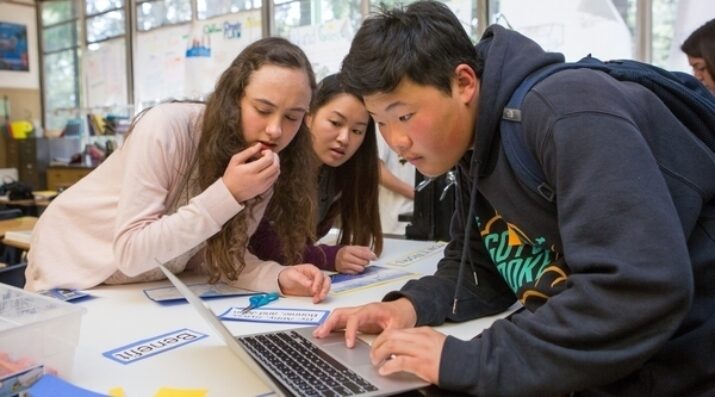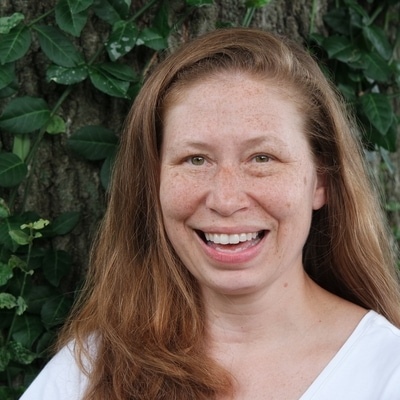The Lecture-Less Classroom
Topics

We’ve all had the experience of truly purposeful, authentic learning and know how valuable it is. Educators are taking the best of what we know about learning, student support, effective instruction, and interpersonal skill-building to completely reimagine schools so that students experience that kind of purposeful learning all day, every day.
How I Learned to Stop Worrying and Love Student Autonomy
Tell me if this sounds familiar. You're a teacher who's been told to squeeze too much material into too little time. You've planned an elaborate lesson opening and your principal has encouraged you to start teaching the instant the bell rings. But the bell rings, and your students are still trickling in. Both you and your students keep getting distracted, and your brilliant lesson starts to fall flat. You're only 2 minutes into class, and already exasperated. This used to be me.
In previous years, I started talking the second after the bell rang. I was trying to maximize instructional time to improve student success. Bell-to-bell instruction had been ingrained in my head by multiple administrators over the years, but I was becoming increasingly annoyed because the students were fidgety, not settled down, coming in late, and missed a lot of what I said so they needed me to repeat myself again later. I thought they should snap to attention and be ready to start class as soon as the bell rang. I was frustrated and the students were mirroring my frustration right back at me.
This year, as a Fellow with The Modern Classrooms Project, I've tried something new: stepping back from the front of the room, and putting more responsibility in the hands of my students. I’ve transformed my class from a traditional lecture style into a blended, self-paced learning space in part by creating a series of instructional videos for each lesson that students can access anytime. Because students listen to the videos when they’re ready and can rewind sections if they need to, they hear more of what I am saying and absorb the material faster. Now the only time I speak to the whole class is for about 5 minutes early on in our 85 minute block and then again for a Daily Debrief the last 10 minutes of class. Otherwise I do all of my talking with students one-on-one or in small groups.
**********
As a teacher with my own room, I always have the chance to take a deep breath in between classes, no matter how stressful they are. My students, on the other hand, don’t. One day I had to change classrooms and walk all the way across campus. I couldn’t believe how hard it was to navigate the hallways in our overcrowded school. I made it to my classroom on time, but I definitely was not ready to start teaching when the bell rang. It was a wake up call to me for how the students must feel hustling from class to class day in and day out. They do this all the time! No wonder their heads weren’t primed for learning.
As if this weren’t enough, I've seen an increase in 504s for anxiety and depression over the years, not to mention the intensity that social media has caused. For all those reasons, I think it is important to do my part to create a less stressful class environment.
So when students walk into my classroom, I know they may already be stressed and I know students feed off the energy of their teachers. If I’m putting out negative energy, they are going to pick up on it and not perform as well as they could otherwise. I practice intentionally increasing my level of patience and calm in order to influence the emotional state of my students so they become ready to learn more quickly.
**********
This year I decided to try something new to reduce students' stress and get them in a better headspace for learning. Structures introduced to me by The Modern Classrooms Project enabled me to tweak my start-of-class routine. When the students come in, I don’t tell them what to do in the usual verbal way. Instead I observe how they react to the physical and virtual cues set up in the classroom like the daily agenda, student progress tracker, paper copies of lesson materials clearly labeled, daily google classroom assignment reminders, videos I’ve created for them on Edpuzzle, and assignment columns set up in the grade book for the entire unit. These cues are designed to help the students clearly understand what they should be doing, what is going to be graded, and what an “on-pace” student would be working on in our self-paced classroom.
Now, when I greet students at the door, it’s not just a formality—I actually have the time to speak with each student, even if briefly, and they have the time to be a human, not just a student. They don’t need immediate directions from me to be productive, because they have so many cues around the classroom. After students check their status on the progress tracker, gather lesson papers, and start logging into their computers, they take a minute to grab some water and say hi to their friends. As I pass back papers, I am able to have one-on-one conversations with students about the work they turned in the class before, especially if they need to make revisions on assignments or they’ve missed multiple classes. And then it happens like magic. The class naturally falls into a rhythm without me ever saying a word.
When I call them together briefly at the beginning of class now, most of the straggling late students have already arrived, the noise level in the class has naturally lowered, and the students are ready to listen to what I am saying. The students and I are working in tandem instead of what often felt like opposition. I rarely repeat myself now.
I had to train myself not to jump right in and start telling the students what to do. I really wanted to see how they would react if I gave them space at the beginning of class. And most of them reacted well, but I do have a student here and there that will hang out for a bit too long. I ask them what their status is and then they usually pull out their materials and get started. But sometimes they tell me about how they’re not having a great day. This gives me an opportunity to help students learn how to be productive even when they’re not feeling it. We talk about what it means to be self-disciplined in a self-paced classroom. This just isn’t a conversation I would have the time or patience for if I were trying to lead a whole class lecture.
Ultimately, I am still doing bell-to-bell instruction, but I realized that just because I'm talking doesn’t mean that my students are receiving what I am saying. It is about redefining what bell-to-bell instruction looks like and shifting the delivery of instruction to meet the needs of the students. I have a larger reach now that I’m participating in The Modern Classrooms Project and creating instructional videos. At first glance, it might look like I’m just passing back papers, but on closer inspection it’s as if I’ve cloned myself. All at once, I am instructing students through my videos, giving students the space they need at the beginning of class, and giving students the personal attention they need. And it’s not just at the beginning of class and it’s not just my students! Students from any of the Geosystems classes at my school have access to my instructional videos 24 hours a day. I am maximizing instructional time in a different way that takes into account their social-emotional needs as well as their academic needs. Not only am I happier and healthier, but more importantly, my students are too.
Photo at top courtesy of Allison Shelley/The Verbatim Agency for American Education: Images of Teachers and Students in Action.




